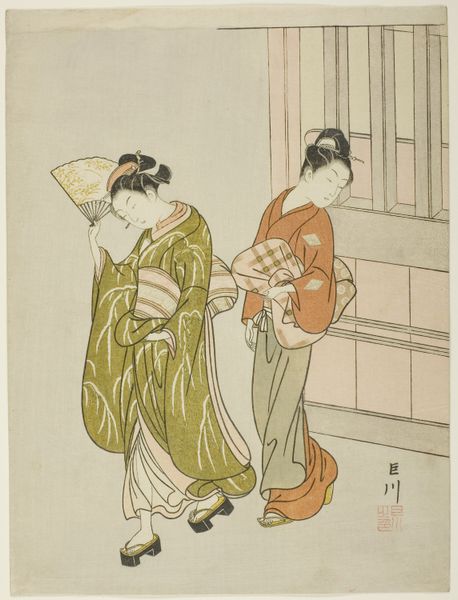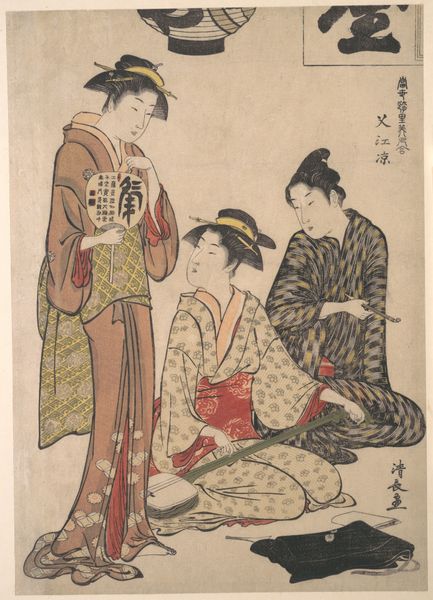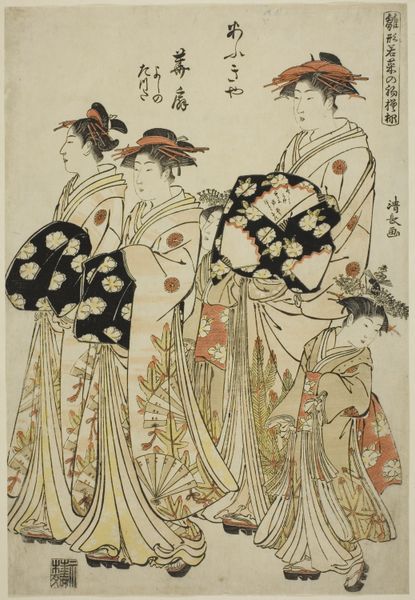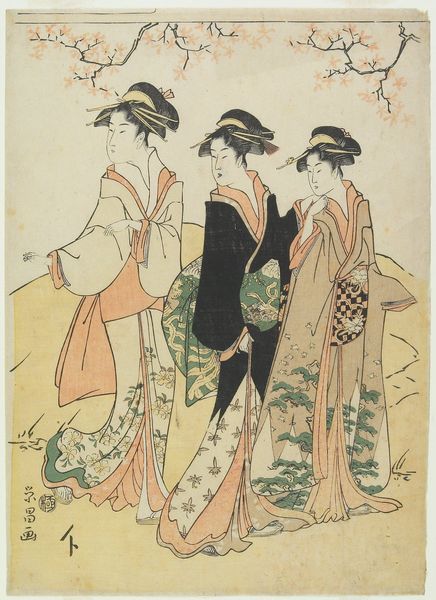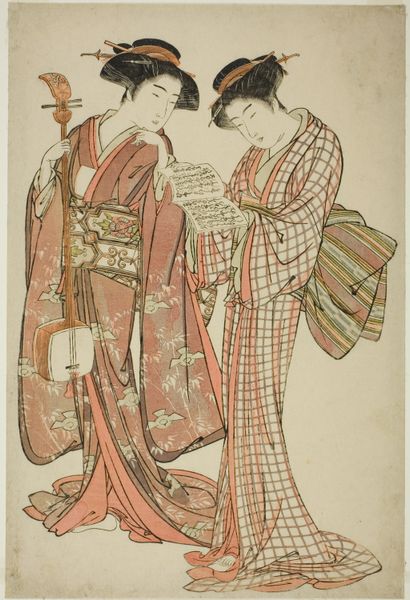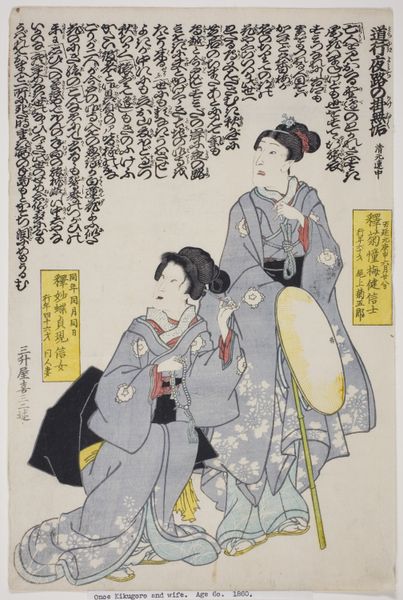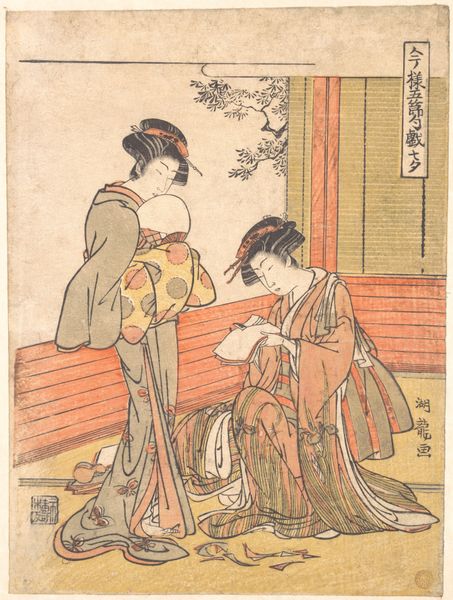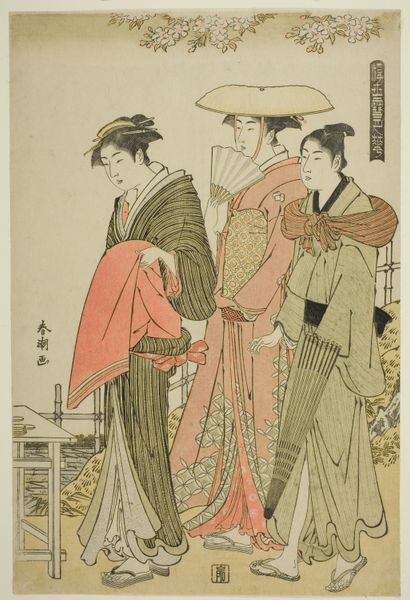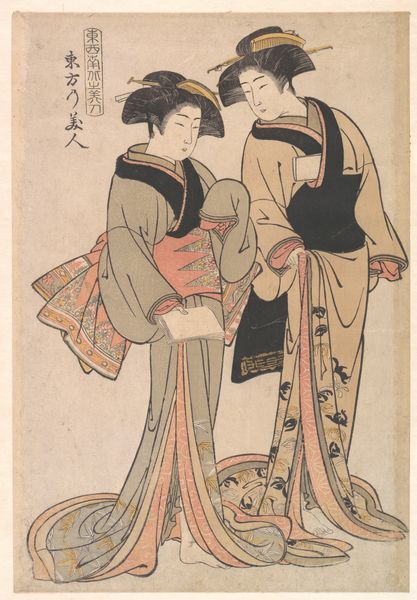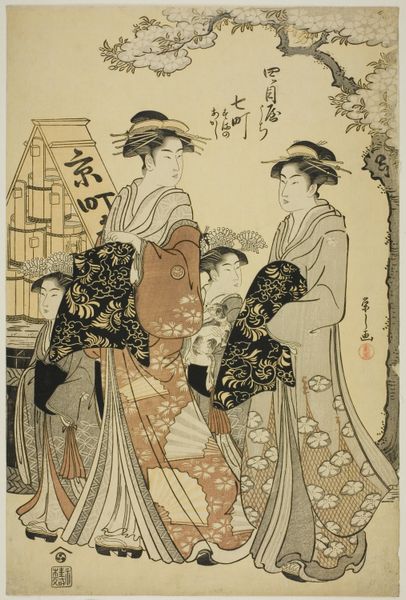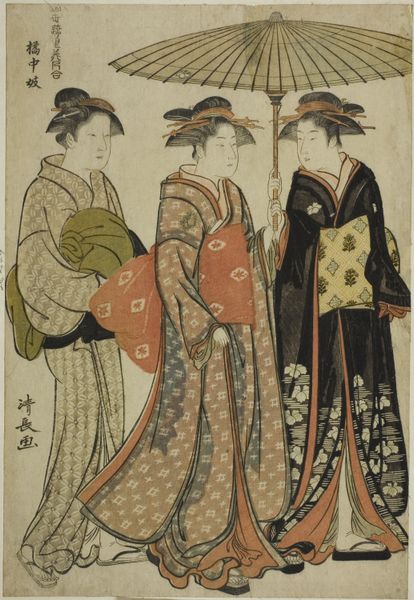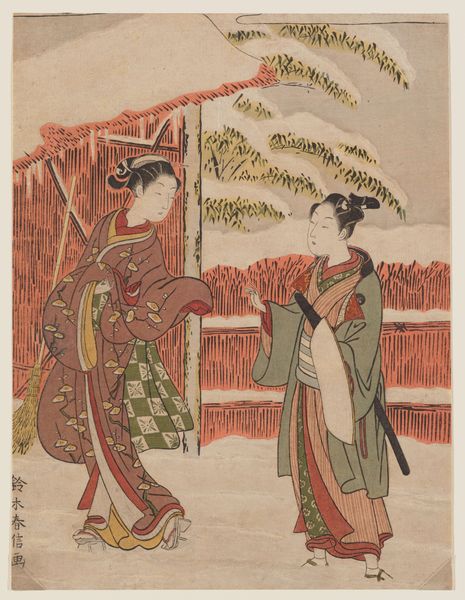
Returning Sails at Ryogoku River (Ryogoku no kihan), from the series "Eight Parodies by Contemporary Beauties (Tosei mitate bijin hakkei)" c. late 18th century
0:00
0:00
print, textile, paper, woodblock-print
# print
#
asian-art
#
textile
#
ukiyo-e
#
japan
#
figuration
#
paper
#
woodblock-print
#
genre-painting
Dimensions: 36.6 × 25.8 cm
Copyright: Public Domain
Editor: This print, "Returning Sails at Ryogoku River" by Kitao Shigemasa, dating from the late 18th century, features two elegantly dressed women. It’s created using woodblock printing on paper, giving it a very linear feel. The light pastel color palette makes it look delicate. What can you tell me about how the composition affects the reading of the piece? Curator: Observe how Shigemasa has organized the pictorial space. The figures are placed asymmetrically, yet they balance each other through the directional lines of their bodies and garments. Notice the textile patterns and how they create visual interest, contrasting the smooth, planar areas of skin. Consider the formal function of the calligraphic text integrated into the design: the script itself creates shapes, both defining space and contributing to its flattening. Editor: The script does blend into the picture, but it's also distracting at first! What is its function within the design's formal structure? Curator: The text's inclusion allows the print to eschew traditional linear perspective and prioritizes surface design. The interplay of these visual components underscores the self-aware artifice central to *ukiyo-e.* Do you see any particular attention drawn to any other visual element? Editor: Well, the textiles! The patterns and color blocks pop with dynamism against the softer background. I almost missed it before! Curator: Precisely. The layering of textile designs operates on several visual levels: color, contrast, and geometric repetition all give form and texture within this world the artist creates. What do you think this achieves for the composition overall? Editor: I think it brings your eye around the image in unexpected ways and forces you to consider what the patterns signify, formally and thematically! Curator: Exactly. That dynamic tension between pattern, line, and textual intrusion exemplifies a key element within the Formalist approach: considering all these choices, how successfully does the composition unite line and space? Editor: The image’s balance creates harmony within those constraints, I think I see that tension, that controlled balance that helps me notice different parts of the composition.
Comments
No comments
Be the first to comment and join the conversation on the ultimate creative platform.
